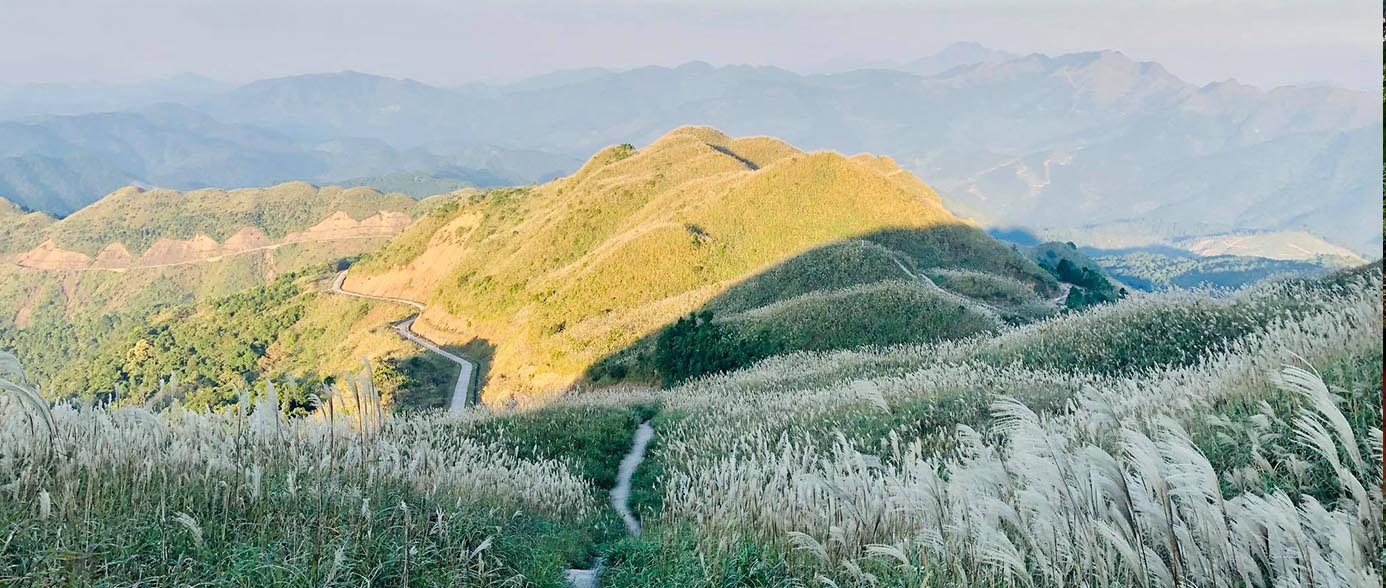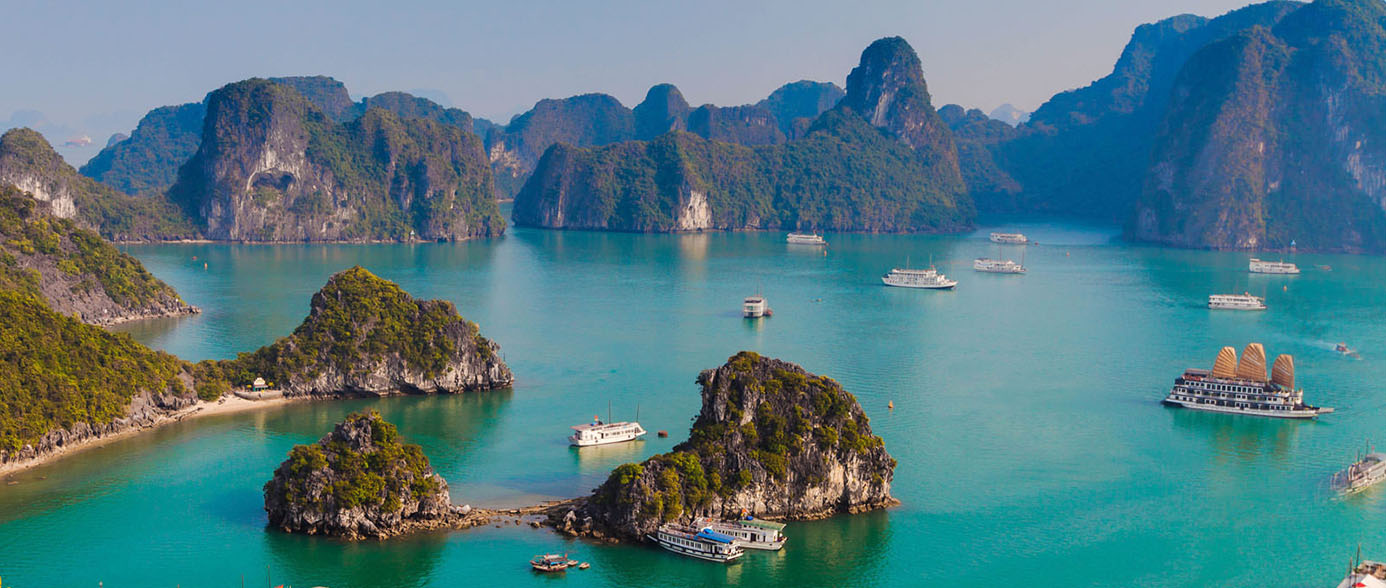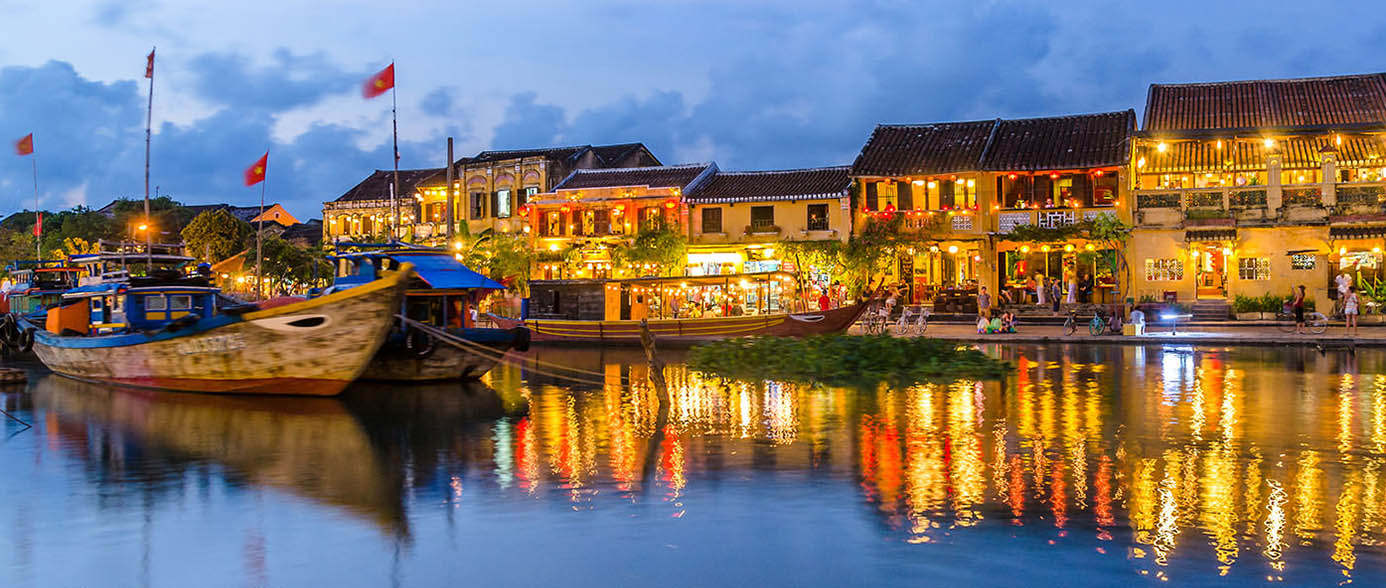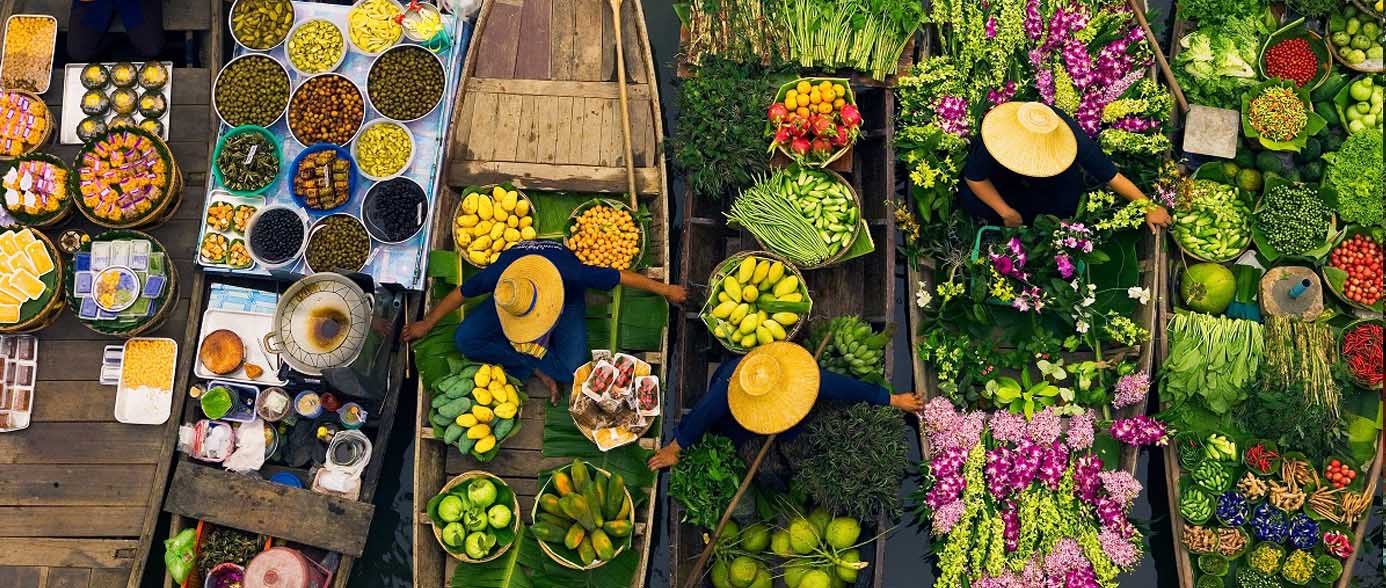TOUR OVERVIEW
14 Days
HA NOI – BINH LIEU – HA LONG – HUE – HOI AN – HO CHI MING CITY – MEKONG DELTA
Vietnam
Vietnam’s magnificent natural landscape makes it one of the most photographed destinations in the Southeast Asia. Join our exciting photography tour to discover a charming Vietnam in unique approaches, improve your photography and yet convey your sense of destination through your travel photo collection.
-
Arriving in Hanoi, greeting and private transfer to our hotel in town.
Overnight in Hanoi. -
Compared to Ho Chi Minh City, Ha Noi is more traditional and refined. Today it is best known for its thriving contemporary art scene and French architecture, visible by the many colonial villas scattered throughout the city. While it is rapidly developing, the city has retained many of its cultural traditions. Tour the city of Ha Noi in which the history and culture of Vietnam are clearly on display. Visit the Temple of Literature, the first university of Vietnam, which constitutes a rare example of well-preserved traditional Vietnamese architecture. Enjoy a cyclo (rickshaw) ride around the Old Quarter streets that were named after the specific goods once offered for sale at these places. Wander around the scenic Hoan Kiem Lake “Lake of the Returned Sword”, to learn about the legend of the lake and the history of the city of Ha Noi. Get inside the city and grab your camera ready to photograph the rawness of everyday life while having fun interactions with local people.
-
Today, enjoy a pleasant drive along the Red River banks to Ha Noi’s neighbor countryside, passing through immense green rice fields and lush fruit farms. Make a stop at the two-century-old village known as the cradle of Incense Making in Vietnam. Let’s snap stunning panoramic photos of villagers and wide-angle shots of workers with an incredibly colorful background. Not too far away is another craft village, famous for making fish traps. Visit the home of the oldest trap weaving artist in the village where we will be amazed by beautiful bamboo fish traps. The focus point here could be on portraiture and we will get to know how to approach and interact with locals in action for quality portraits. Wind our way to the most famous silk weaving village in Northern Vietnam since the 13th century. Walking leisurely on winding village roads, we can feel the bustling working atmosphere thanks to the sounds of power-looms in many households. When getting inside a silk weaving workshop, we would need to improvise with the dark and moody conditions. Using natural lighting the right way, we can create a fantastic atmosphere and emphasize the subject.
-
Located near the border with China, the off-the-beaten-track district of Binh Lieu has once nicknamed “a miniature Sapa” as well as considered the newest destination of Quang Ninh province defined by the breathtaking view of cascading rice terraces and traditional customs of a unique ethnic group.
Explore a quiet village inhabited by Dzao Thanh Phan people who have chosen red as the typical color for their traditional costume. Young Dzao Thanh Phan ladies wear chin straps and red, patterned scarves over their heads, showing softness, naivety, and elegance. Stroll around the village and capture the magnificent portraiture shots of local people while engaging in friendly conversation with them to understand deeply how they have retained their traditional customs and handicrafts, handed down carefully down by generations. Continue onwards to visit the vibrantly powerful Mooc Riverwaterfall located within the nestled mountain plains. Dip our toes in the waters and review the beautiful scenery. Follow a paved road with 2,000 steps carved into the mountains to reach the boundary marker 1305 with China, located on the highest peak of Binh Lieu district which is 700m above sea level. Hike through the "Dinosaur Spine", while taking in the splendid views of pristine mountainous landscapes. This offers wonderful photographic opportunities as well as breathtaking mountainous vistas of when it is going sunset. Traveling in November, we would be amazed by a series of endless mountains and valleys filled with picturesque white reeds. -
After tasting one of the Vietnamese breakfast dishes: Pho or Bun or Banh Mi, stroll around a bustling morning village market to peruse a vibrant range of unique ingredients of Northern Vietnam. Take in the sights and sounds of the local life, opt to stop at some vendors to try some favorite snacks and desserts.
Wind your way to magical Ha Long Bay, inscribed by UNESCO as a World Heritage site in 1994. Magnificent Ha Long Bay, with its 3,000 islands rising from the clear, emerald waters of the Gulf of Tonkin, is one of the natural marvels of Vietnam. These tiny islands are dotted with innumerable beaches and grottoes created by the wind and the waves. Observing the limestone rocks rising from the sea and sailed junk boats sail by will be a truly memorable experience. Upon arrival, let the exploration begin with a delicious seafood lunch served on board as the boat cruises amongst the incredible limestone karsts of Ha Long Bay to view Thumb Island, Cock Fighting Island, and Incense Island which can be seen on Vietnam’s 200,000 dong currency note. Explore one of the biggest, beautiful stalactites and stalagmite caves of the bay. Get to a secluded beach where we can kayak in the crystal clear waters of the bay. Then venture back to the main boat to cruise to the location where we dock overnight. -
The day starts early onboard with Tai Chi session on the sundeck. Tai Chi combines deep breathing and relaxation with slow and gentle movements. Coffee, tea, and pastries for breakfast are served in the dining room with a morning view of the bay’s landscape. Enjoy the excursion provided by the cruise and then relax on the sundeck or in the dining room, enjoying the bay scenery while approaching the wharf.
Drive back to Ha Noi for the afternoon flight to Hue City. Inscribed by UNESCO as a World Heritage Site, the complex of Hue monuments is a great feature of the cultural and religious centre of the last royal dynasty of Vietnamese history from 1802 to 1945. The royal palaces and tombs provide fascinating glimpses into the luxurious and secretive world of the glorious court. -
Spend this morning exploring the major attractions that contribute to the undeniable royal charm of this charming city. Visit the Imperial Citadel where the kings of Vietnam’s last feudal dynasty ruled from 1802 to 1945. This is home to the palaces, pavilions, civil and religious ceremonies, and official audiences with the civil mandarins. Learn about the history of the Citadel and marvel at its stunning royal architecture with opportunities to photograph inside the monument. Head out to the last resting place of the 12th king of Nguyen dynasty, Khai Dinh who left behind a magnificent and huge burial compound idyllically located on the peaceful Chau Chu Mountain. Let’s snap a perfect architectural combination of European and Asian culture, between classic and modern features. If time permits, continue to the peaceful Vong Canh hill, a beautiful spot that reflects itself charmingly in the Perfume River and offers a great panoramic city view.
Enjoy a scenic drive to Tam Giang Lagoon. Visit on arrival the primeval Ru Cha mangrove forest with a diversified ecosystem. Perched on a hidden tiny islet on Tam Giang Lagoon, this biosphere reserve is home to hundreds of 100-year-old mangrove trees as well as the destination of migrating birds in late winter and early spring. Board the local boat to enjoy a leisure ride on the picturesque Tam Giang lagoon for an insight into the daily life of local fishermen, including shrimp and fish farming and fishing using nets. Known as the largest lagoon in Southeast Asia and the richest source of flora and fauna, Tam Giang Lagoon provides sufficient living conditions to more than 300,000 inhabitants who make a living mainly from fishing and farming. Continue to the open waters and take in the sunset to add depth to our photo collection. -
This morning, join the local for a memorable ride traversing the mesmerizing Hai Van Pass, one of the most photographed sights of Central Vietnam, offering a spectacular view of verdant mountains, clear blue skies, and beautiful Lang Co beach. From the top of the mountain, Lang Co beach appears as a charming and fascinating picture that is formed from verdant trees, crystal clear waters, especially the cloud covering the cascading mountains. Pay the first visit to a local fishing village, situated embraced with one side of deep mountains, and one side of endless sky and ocean. The village itself offers excellent opportunities for photography including fishermen unloading fish; old women laying fish out in the sun to dry. Explore Son Tra Peninsula that can be seen throughout the city, a beautiful contour of greenery marking the horizon, complete with a white statue at its peak. Stop at several points to capture spectacularly beautiful sweeping views of Da Nang city along the coastal road.
What makes Hoi An remarkable is that its Old Quarter has been beautifully preserved: the streets with old tile-roofed shop houses, shady pagodas, and colorful communal halls. This evening, zigzag through scenic alleys to capture the street life, every night activities of the local people in the town. You can choose to capture the portrait of local street vendors, the ancient houses decorated by colorful lanterns, or the view of Hoi An at night while floating lanterns are released. -
Rise early morning (around 4.45 AM) and head to a local fishing village. This is a perfect time to capture the sun as it peeks over the horizon and offers you a reflection on the river. The village offers an ideal opportunity for photography which can be: fishermen checking fish after a night at sea; old women laying fish out in the sun to dry and the bustling local fish market with the peaceful village behind it. Finish the tour at a local shipyard and transfer back to town where you will enjoy Vietnamese coffee and review your recent photos.
Have your camera in your hands and get ready for a guided walking tour around Hoi An Ancient Town. The narrow lanes in Hoi An are ideal for a guided walking tour to photograph its highlights such as old merchant houses with influences from Chinese, Japanese and Vietnamese architecture; the 400-year-old Japanese Covered Bridge, first built in the 1590s by the Japanese community to link them with the Chinese quarters across the stream; the Assembly Hall of the Chaozhou Chinese Congregation with its intricate woodcarvings…
Enjoy a leisure ride by traditional buffalo cart passing by green rice paddies and lush vegetable farms to Hoi An’s outskirts. The exploration offers various photogenic elements of countryside landscapes, people, farming activities... The highlight of this excursion is spending time at a local home, and chatting with the host for an overview of the daily farming activities. -
Take a short morning flight from Da Nang to Ho Chi Minh City. As Vietnam’s commercial center, Ho Chi Minh City (Saigon) is truly a city that never sleeps. Despite its modernity, Ho Chi Minh City retains a strong link to the past with its historic landmarks and beautiful French colonial buildings.
Explore the city on foot and snap the key monuments of the cities. The walking tour starts at the City Halls, and from Saigon Opera House continue our exploration on rue Catinat, make a stop at some famous monuments of the city such as CIA building. Notre Dame Cathedral, Central Post Office, and Reunification Palace. Make a rest at a local street coffee shop where Canadian Prime Minister Trudeau had a casual cafe with the locals. After an outside visit to the Fine Art Museum, a stunning French building built in the late twenties, wind our way to experience a walk on an antique street close to Ben Thanh market. The last stop of this exploration is the Sky Deck on Bitexco Tower where we will position to photograph the panoramic view of the city when the magical sunset is over the Saigon River. -
The best way to see how the Saigoneses get their day started is to wake up a little early and explore some hidden corners of the city. Life begins here early before the heat of the day from the morning crowded street shops to the lively local outdoor markets where people shop for their daily needs. Zigzag through the local streets of the city, what a great chance for you to experience the peaceful and fresh atmosphere of the city. Stop at Tao Dan Park to watch or take part in some morning Tai Chi class or other types of exercise. Make our way to visit the largest flower market in D10, Ho Thi Ky street, catch the hustle and bustle of flower trading activities amid colorful blooms of flowers from all over the country such as roses, lotuses, lilies, daisies, orchids, and more.
Visit the War Remnants Museum which presents a partial yet vivid view of the American War through the Vietnamese’s eyes as it contains fascinating remnants and photographs of the past including US armored vehicles, artillery pieces, bombs, and infantry weapons. Stop at Thich Quang Duc monument, dedicated to the monk who famously committed self-immolation in 1963 to protest against the persecution of Buddhists. End up this morning with a simple lunch with “Pho” (noodle soup) at Pho Binh restaurant, this place used to be the headquarters of Viet Cong Commanders where they gathered to plan for the 1968 Tet Offensive.
Meet with a passionate travel photographer for a short brief of tips and tricks as well as her approach to street photography. Then, follow her steps to discover the hidden corners away from the usual tourist attractions of the city. Chance to practice various photographic techniques as well as get an insight into the daily life of a real Saigon. The special focus can be on portraiture and we will learn how to approach and interact with locals in action for quality portraits. At the end of the trip, stop at a local coffee shop to review what you capture today before saying goodbye to the photographer. -
Today, escape from the high-energy city and set off for a memorable day of exploring Ben Tre province, the gateway to the Delta, by the charming Apricot Boat that features a combination of modernity and tastefully traditional riverboat style. Join our dedicated crew for a slow journey that brings you to all the colorful aspects of the Mekong Delta: a beautiful natural landscape filled with tropical fruit farms and rice paddies. Shore excursions include the home of a tropical fruit farmer, the family-run business where almost every part of the coconut is used for candies and crafts. Travel on the narrow village lanes by traditional tuk-tuk or bicycle passing through sleeping villages, local cottage industries, canals, and fruitful orchards. Followed by a ride by a traditional rowing boat, gain an up-close experience of the network of narrow canals typical of the Mekong Delta. One of the highlights of the trip is to meet the local farmers and engage in a friendly chat with them to understand their daily farming tasks. This full-day photography excursion offers photogenic elements of landscape and lively activity of the fertile Mekong Delta. Continue onward to Can Tho city, the heartland of the region.
-
Wake up early morning and board a local boat to visit Cai Rang floating market. The waterway becomes a maze of hundreds of boats, we will see an interesting trading activity by using a traditional “offering pole”-exchanging consumer goods hanging on the pole for Mekong fruit and vegetables with local sellers. Have your camera ready as this vibrant wholesale market on the water makes for excellent photo opportunities, especially from the unique vantage point of your boat. Visit Binh Thuy Ancient House, filled with features that represent rural areas in the Mekong Delta region during the 20th century. Then, make a 3-hour drive northwest towards Chau Doc town, a colorful and sleepy town near the Vietnam-Cambodia border. We drive 45 minutes to Tra Su Nature Reserve (open year-round, breeding birds are most plentiful between July and Feb). Travel by sampan through endless waterways flanked by mangroves and lush greenery. This sanctuary covers an area of approximately 850 hectares. A wide variety of colorful birds and other animals can be found here: storks, bats, snakes, turtles … Particularly interesting to watch are birds that can walk on water: because of their low body weight they do not fall through the densely grown floating habitats.
-
Rise early this morning and take in the sights and sounds of a local wet market where locals from the countryside around Chau Doc shop for essentials, groceries, and foods. Some of them might be unknown to most of us but we will get to know how they are used in Vietnamese cuisine. Grab our cameras and focus on the lookout for interesting patterns or colors and the fleeting moments like for example, the interaction between a vendor and customer or the vendor making something.
Travel by motorboat, a common form of local transportation, along the Chau Doc River. Stop at one of the many floating fish farms, meet the fish farmers, and see the fish being feed. After leaving the fish farm, proceed to the Cham Village (Muslim Village), opportunities to contemplate Cham People’s Culture as well as visit Cham People’s weave fabric. Walk around the village to see a mosque and notice the differences in Cham-style stilt homes and their modest yet colorful style of dress.
Take a short ferry a short ferry across the Mekong River to reach the most famous silk-making village of Vietnam. Nested in a small islet surrounded by waterways, Tan Chau village is popular thanks to the softness, toughness, long-wearing, and high absorbability of natural silk material. Let’s snap portraiture shots with high contrast when combining villagers and craftsmen in action. Then head outside to the silk drying field to capture the beautiful photos of your creativity in composition and color mixing. After the visit, drive back to Ho Chi Minh City for our evening homebound flight.----------- End of service ----------






